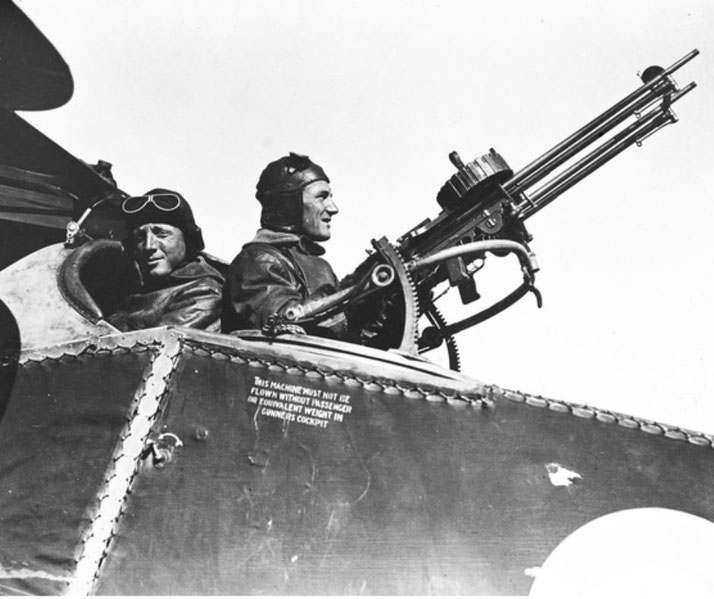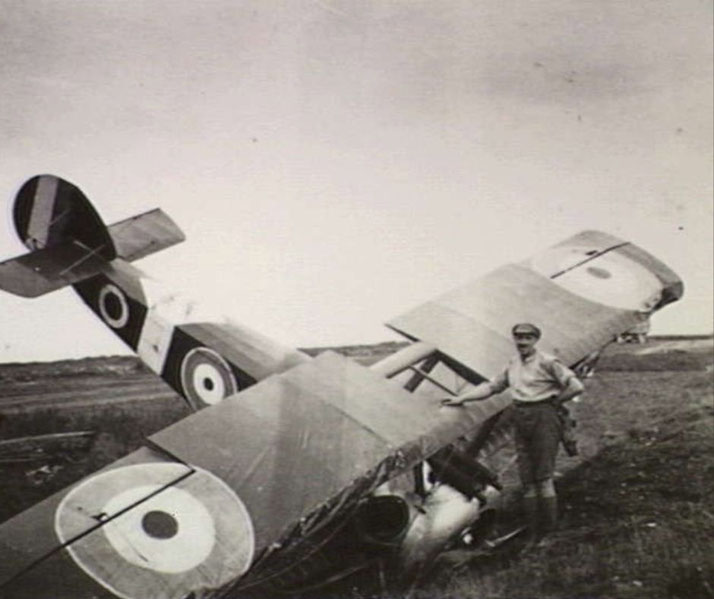The incredible reason WWI pilots didn't shoot their own propellors during combat

During World War, as pilots soared above the trenches, they faced a unique challenge: how could they fire directly ahead without shredding their own propellers?
The solution to this aerial conundrum would revolutionize dogfights and shape the future of combat aviation forever.
But what was this groundbreaking invention?
How did it work, and what were the risks involved?
The awkward birth of aerial combat
As World War I erupted in Europe, the role of aircraft was initially limited to reconnaissance.
These early flights, often conducted in frail biplanes, did provide valuable information about enemy troop movements and positions.
However, as opposing pilots began to encounter each other in the skies, spontaneous skirmishes ensued.
These initial confrontations were embarrassingly rudimentary. Pilots used whatever means they had at their disposal, from pistols, rifles, and even bricks or grenades.
It quickly became apparent that whoever could develop an effective air-to-air combat technology would have a significant advantage.
So, both sides raced to dominate the aerial theatre, which sparked rapid advancements in aircraft design and armaments.
By 1915, both the Allies and the Central Powers recognized the potential of using aircraft as offensive weapons, not just passive observers.
This realization marked the true birth of modern aerial combat.
The first dedicated fighter planes were equipped with forward-facing machine guns.
However, the challenge of firing through a spinning propeller without damaging it remained.
Various solutions were attempted, including mounting guns above the propeller arc or on the wings.
However, these designs were difficult to master and very ineffective.

The revolutionary 'synchronization gear'
The synchronization gear, often referred to as an "interrupter" or "synchronizer," was a groundbreaking solution to a pressing problem in early aerial combat.
At its core, the device was a mechanical system designed to ensure that a machine gun mounted on an aircraft would only fire when the propeller blades were not in the line of fire.
This allowed pilots to shoot straight ahead, a significant advantage in dogfights.
The basic principle behind the synchronization gear was to link the machine gun's firing mechanism to the engine's rotation, which drove the propeller.
By doing so, the gun would only fire at specific intervals, precisely timed to the moments when the propeller blades were clear of the gun's line of fire.
This was achieved using a series of cams, rods, and levers that translated the engine's rotational movement into controlled firing actions for the machine gun.
One of the earliest and most influential figures in the development of this technology was Anthony Fokker.
He was a Dutch aviation pioneer.
Fokker's design, which was introduced in 1915, was among the first to be both reliable and efficient.
His synchronization gear was first fitted to the Fokker Eindecker aircraft. This gave German pilots a distinct advantage in the skies for a period known as the "Fokker Scourge."
The instant impact on WWI aircraft and combat
The ability to mount a machine gun on an aircraft and fire directly ahead without damaging the propeller transformed the dynamics of dogfights and shifted the balance of power in the skies.
As a result, the new aircraft evolved from simple passive reconnaissance tools to formidable offensive weapons.
For the first time in history, countries could build dedicated fighter planes: ones that were designed specifically for air-to-air combat.
These new fighter craft could engage enemy aircraft head-on, which would lead to more direct and aggressive tactics.
This newfound capability also gave rise to the era of the fighter ace—pilots who achieved a significant number of aerial victories.
Figures like Manfred von Richthofen, better known as the Red Baron, became legends.
The exploits of such aces were celebrated and feared in equal measure by newspapers around the world.
In fact, aces became symbols of national pride and propaganda tools. Governments proactively shared their stories used to boost troop morale and encourage recruitment.
The synchronization gear also had a curious influence in the creation of defensive air tactics.
It didn't take long for pilots to recognize the threat posed by synchronized machine guns.
So, pilots and engineers developed new maneuvers and aircraft designs to evade or counteract enemy fire.
This continuous cycle of innovation and adaptation drove aerial warfare during the war, with each side striving to gain a technological or tactical edge over the other.

How it influenced later aircraft after the war
The synchronization gear, having proven its worth during the war, inspired further advancements during the interwar period.
New aircraft designs, tweaked engine performance, and experimental armament arrays were trailed by many countries in Europe.
Compared to the war years, the aircraft designs of the 1920s and 1930sbecame more streamlined, and engines more powerful.
As planes became faster and more agile, the need for accurate and rapid-firing weaponry became even more pronounced.
As a result, while the basic concept of the synchronization gear remained, it underwent refinements to accommodate the increasing rate of fire and the demands of modern combat.
By the time World War II began in 1939, aerial combat had evolved considerably from its WWI origins.
Fighter planes were now equipped with multiple machine guns and, in some cases, high calibre cannons.
Guns also began to be mounted in the wings, away from the propeller's arc, reducing the need for synchronization.
However, as World War II progressed, the nature of aerial combat and aircraft design began to shift again.
Jet propulsion had finally been developed, which provided new speeds and altitudes that previously unattainable.
So, in the subsequent years, jet-powered aircraft became the norm. By then the traditional propeller-driven fighter planes became less common in frontline service.
What do you need help with?
Download ready-to-use digital learning resources
Copyright © History Skills 2014-2025.
Contact via email
With the exception of links to external sites, some historical sources and extracts from specific publications, all content on this website is copyrighted by History Skills. This content may not be copied, republished or redistributed without written permission from the website creator. Please use the Contact page to obtain relevant permission.





